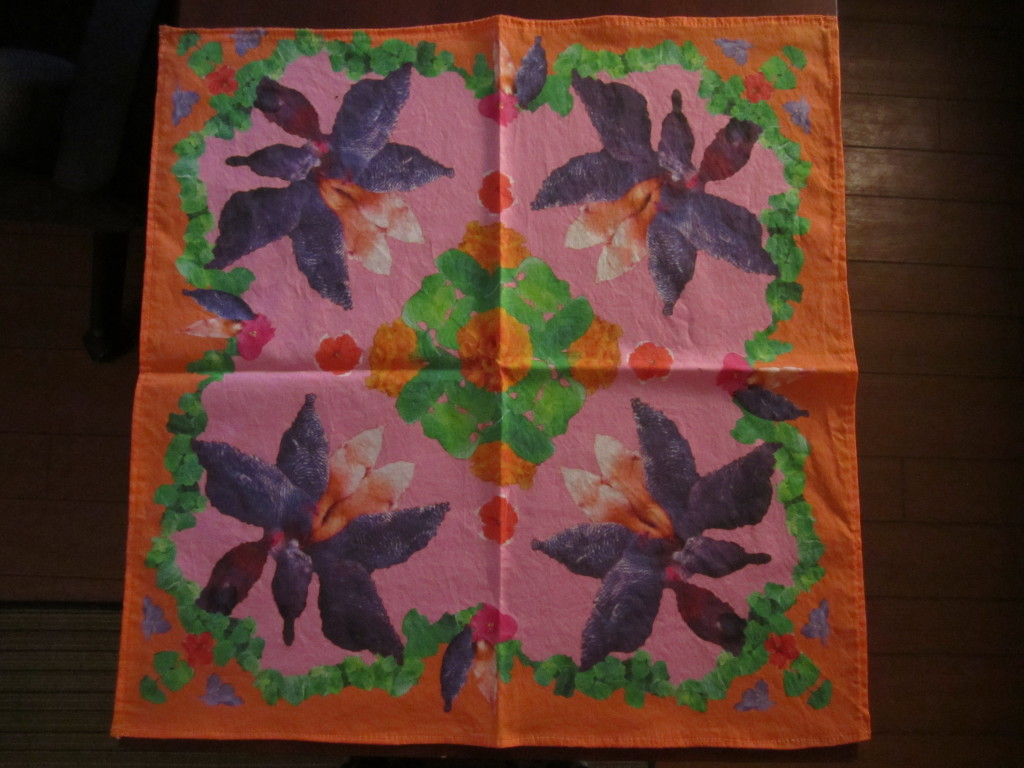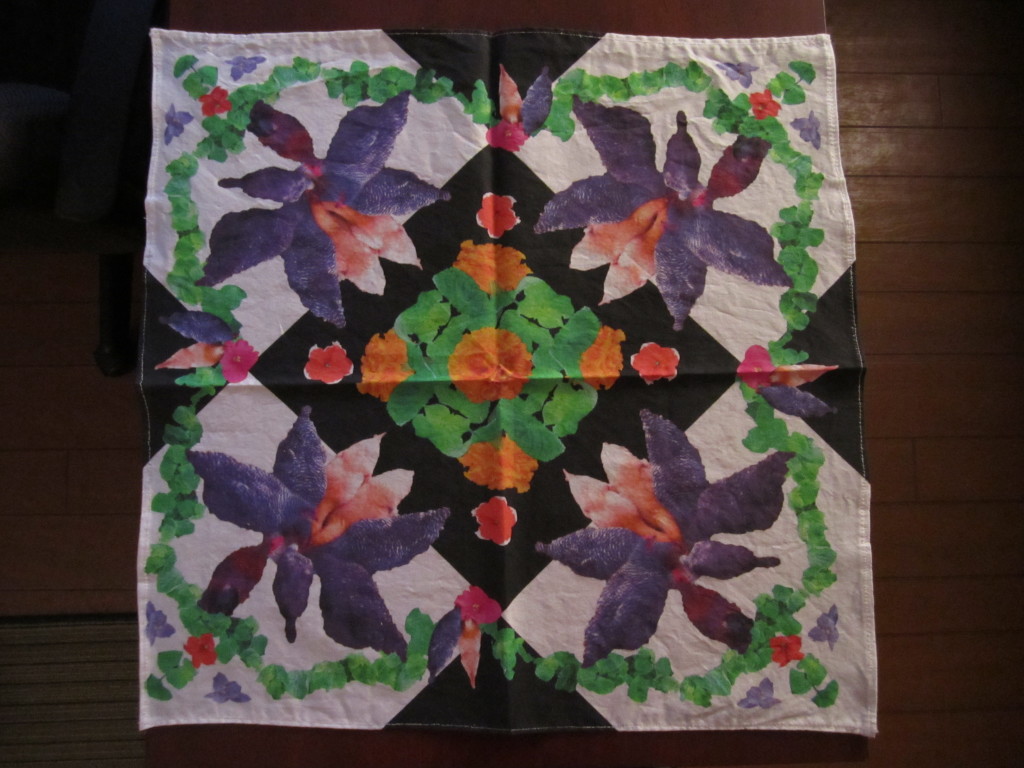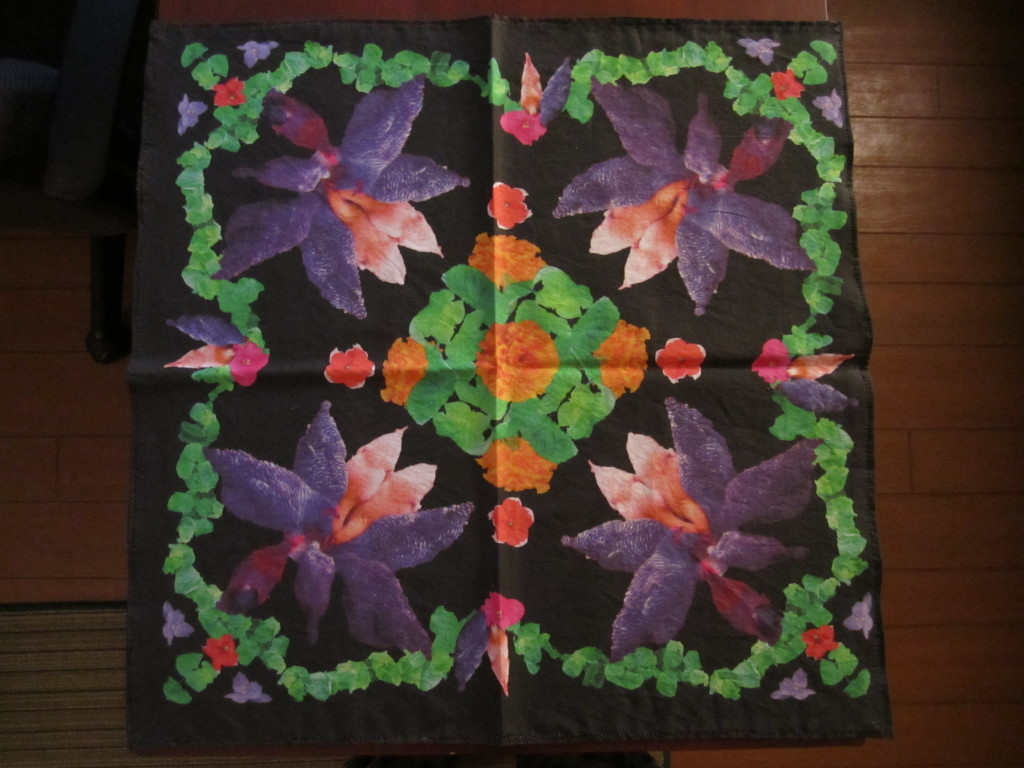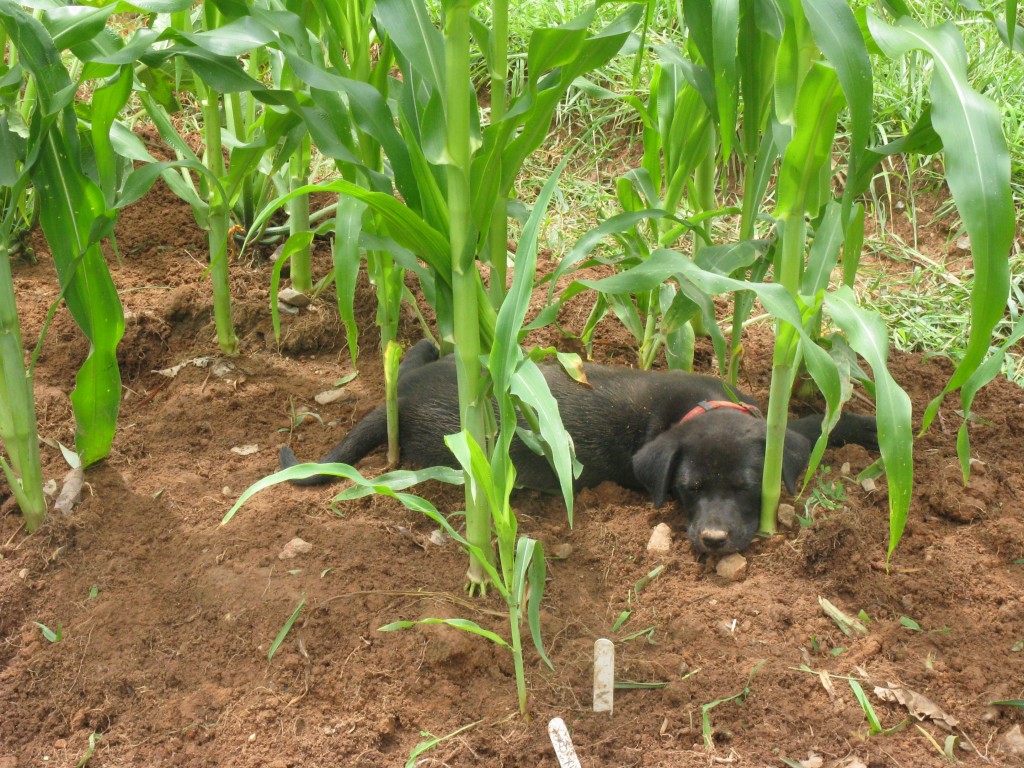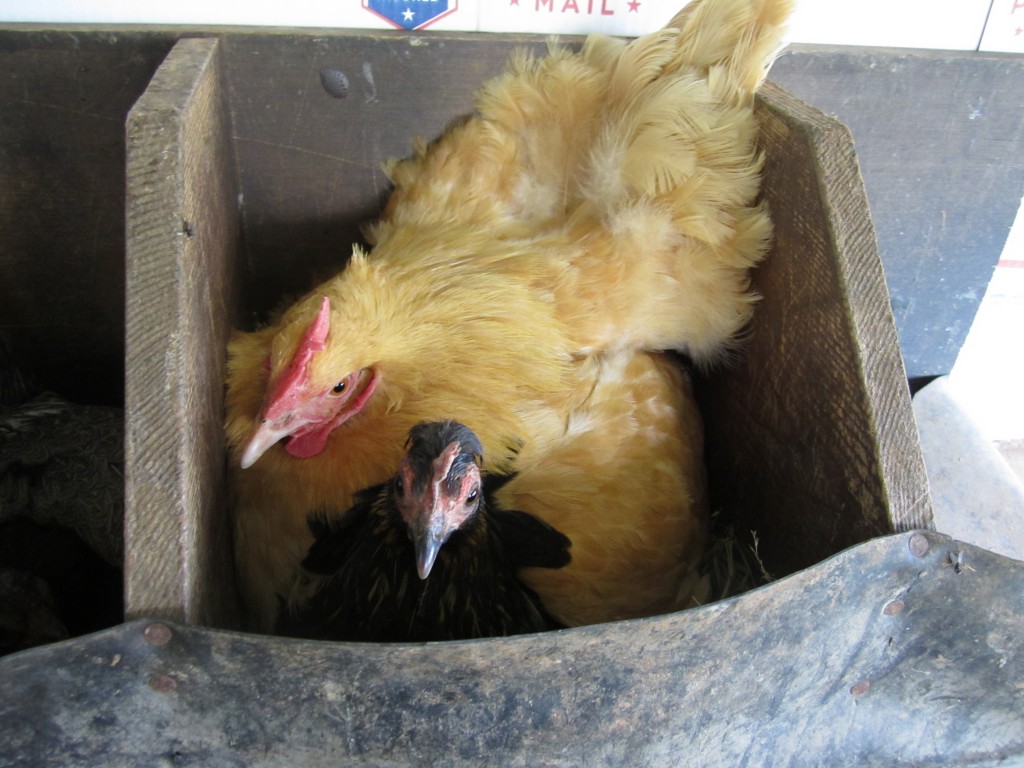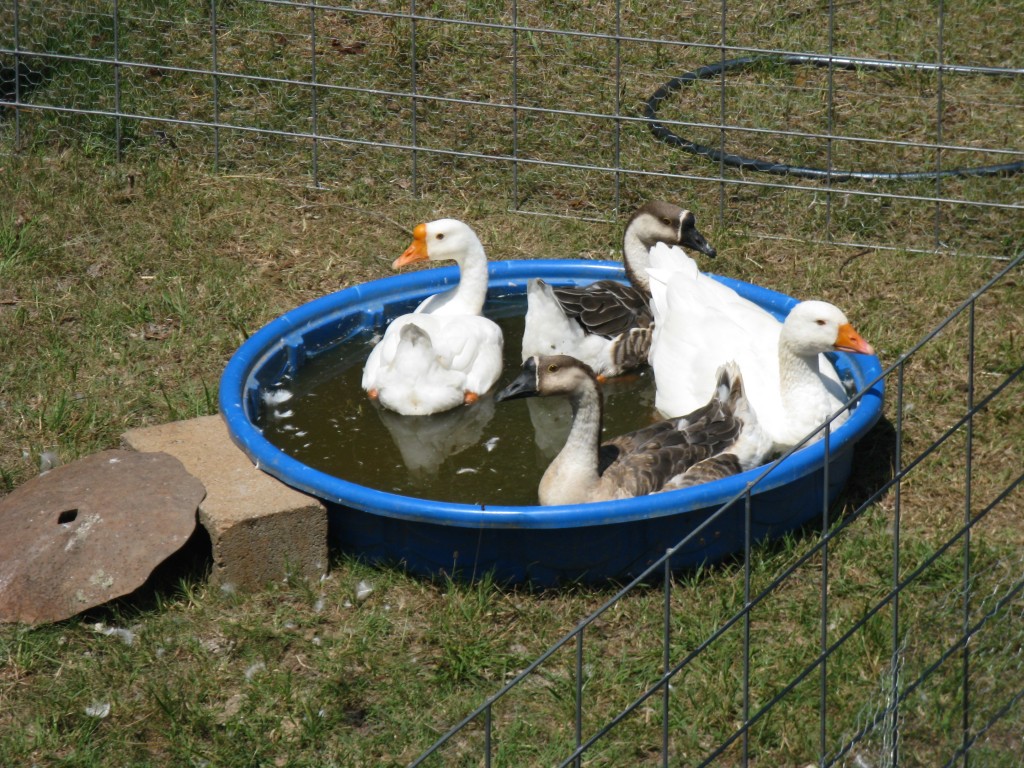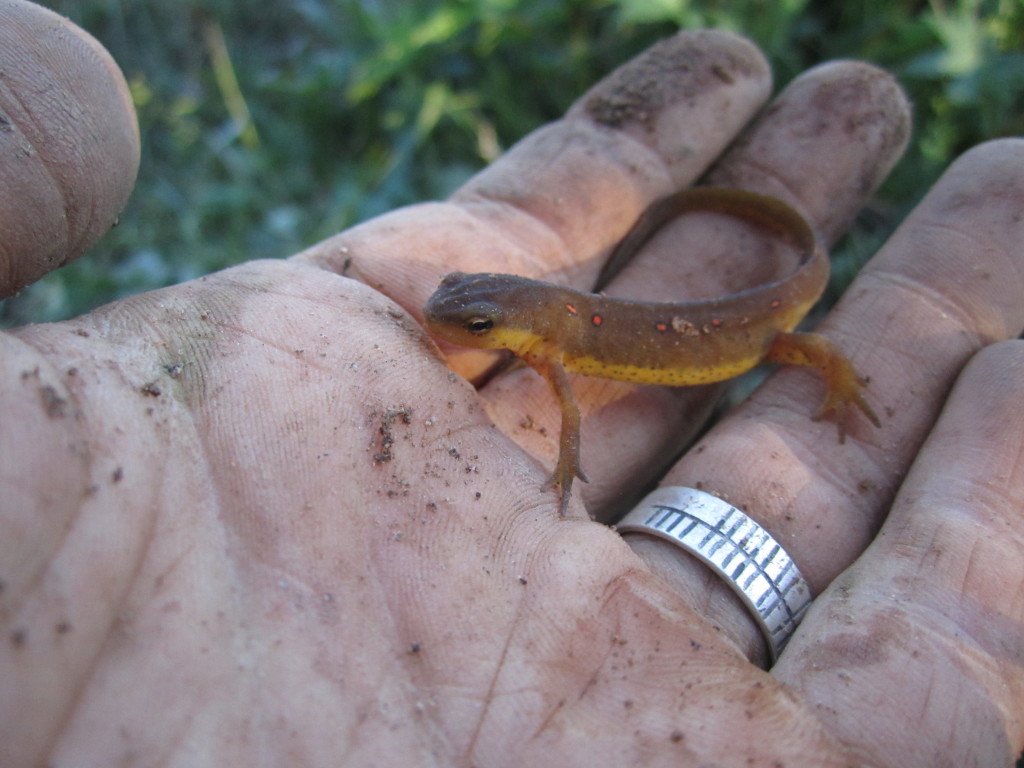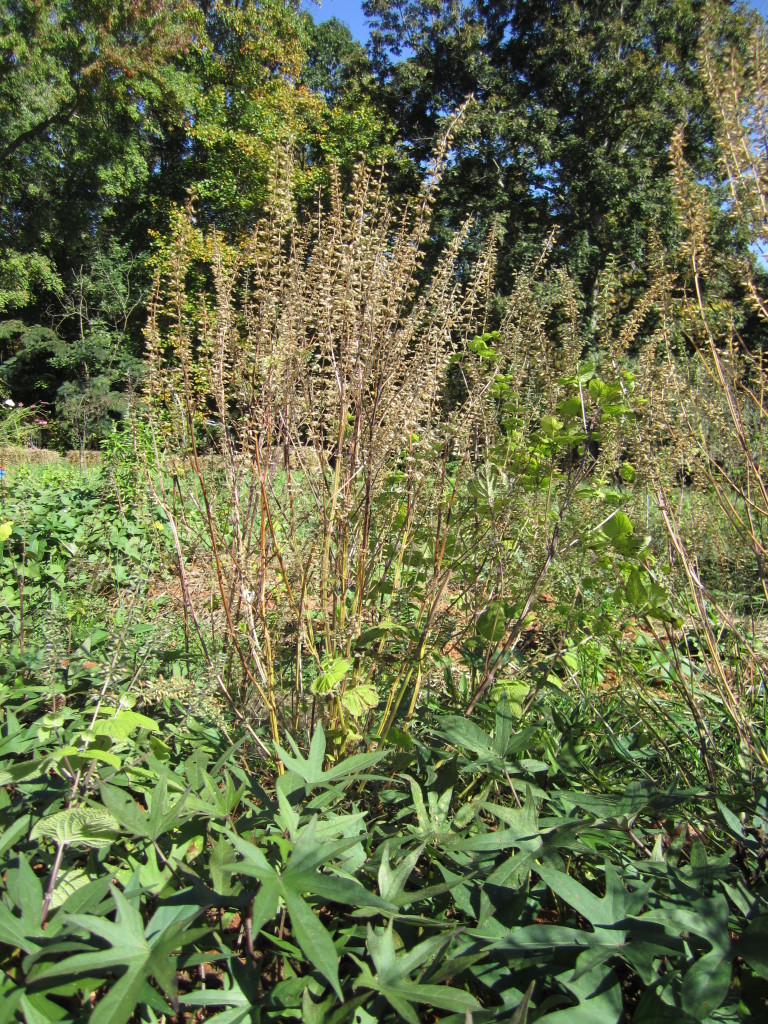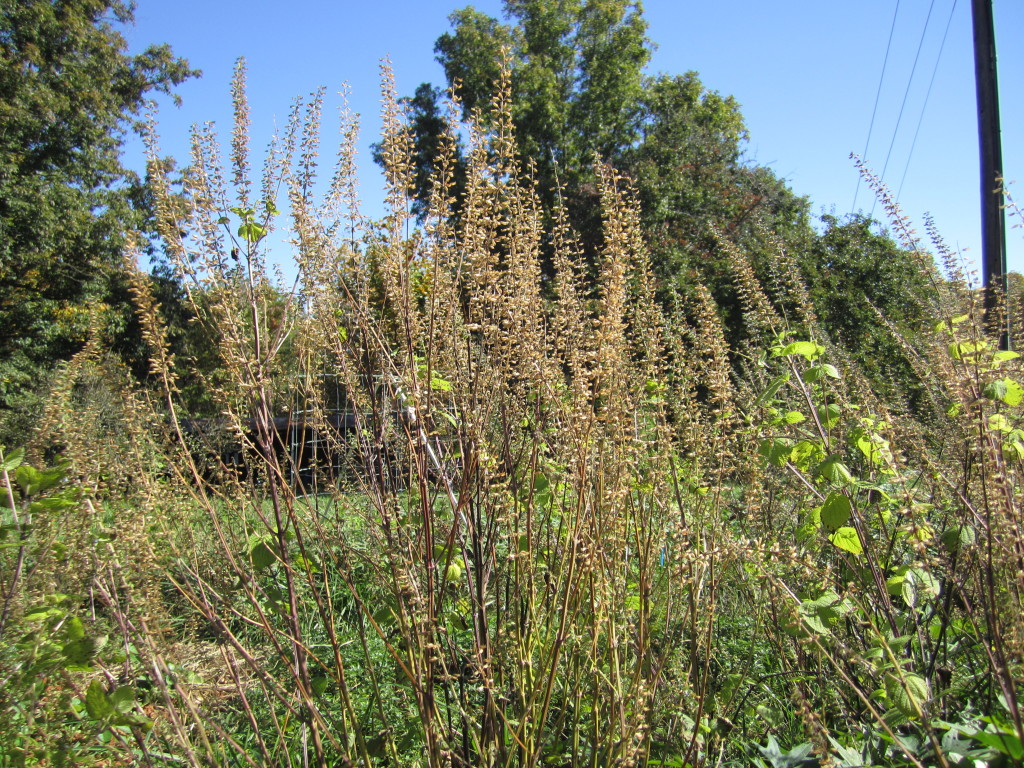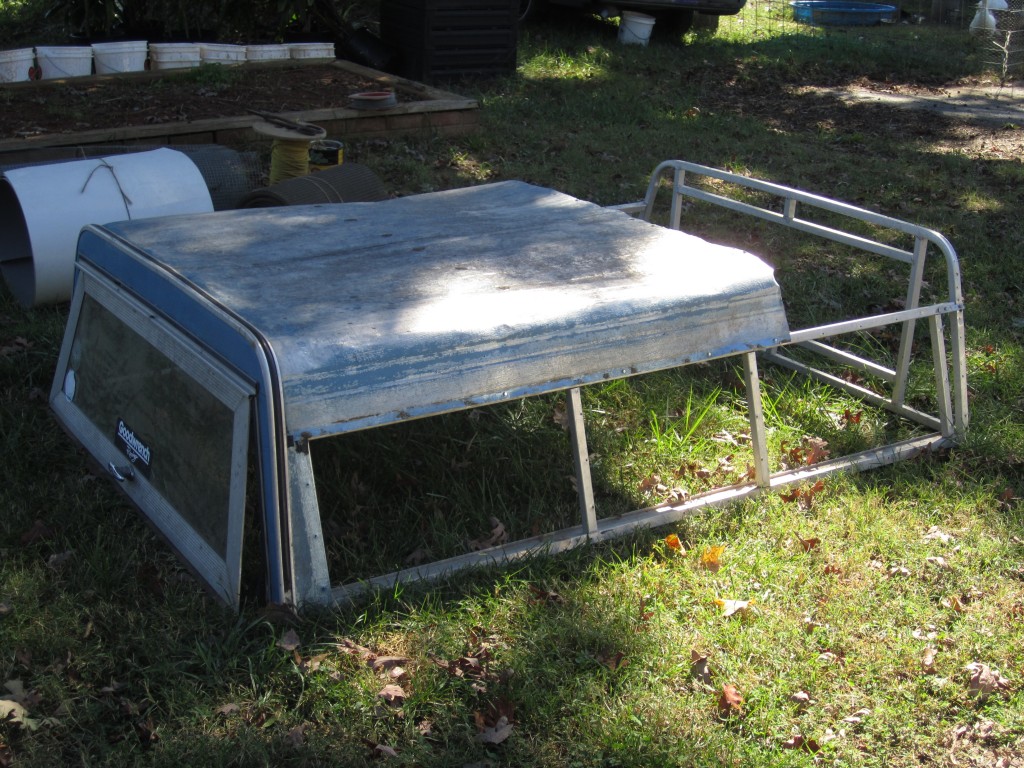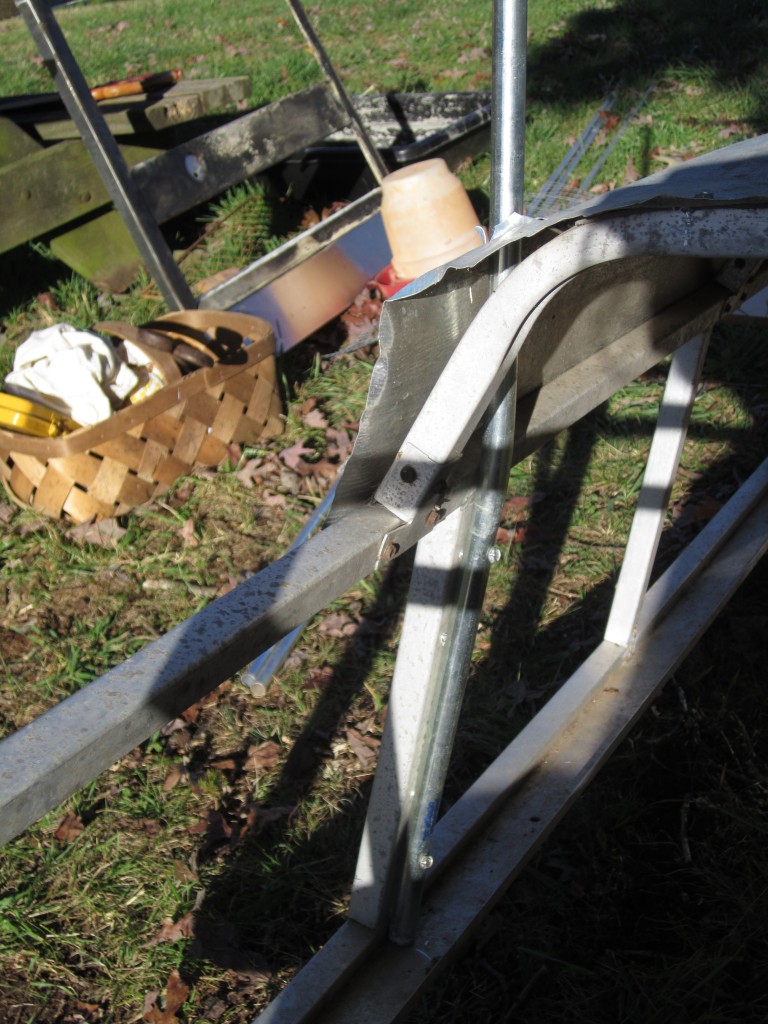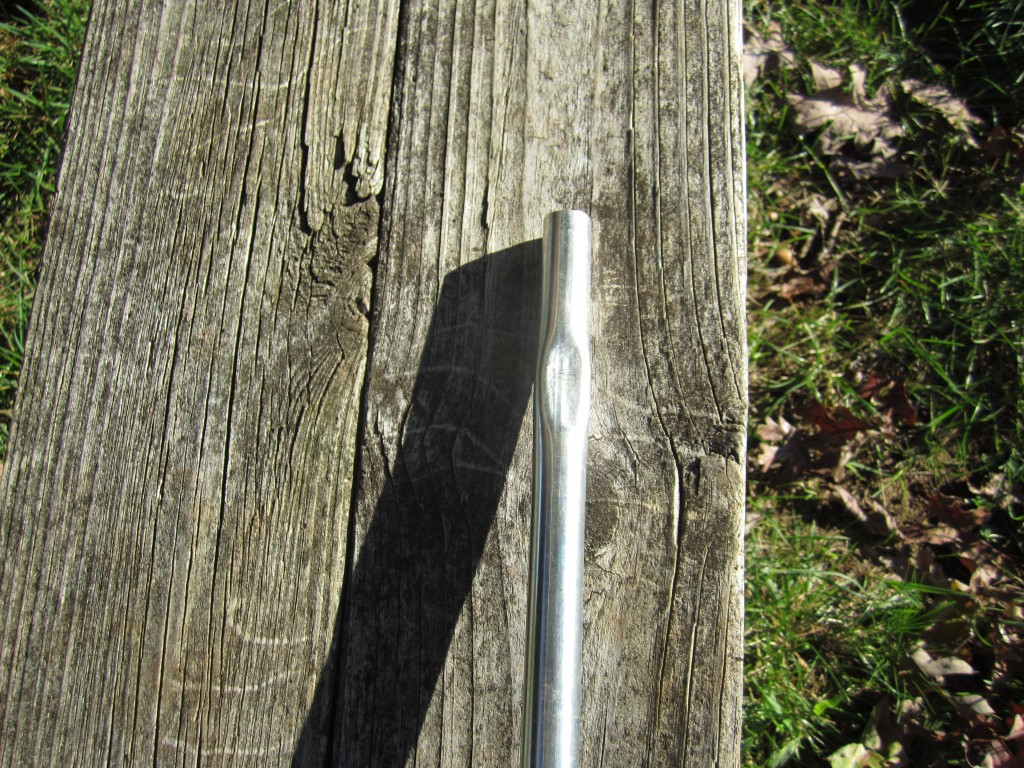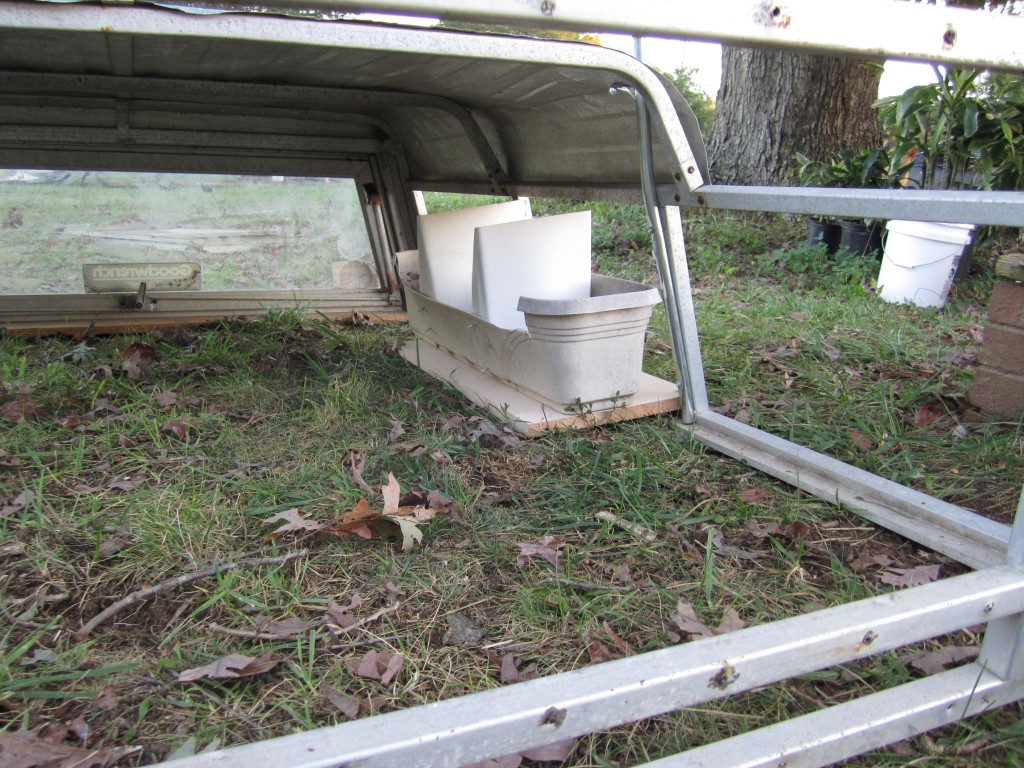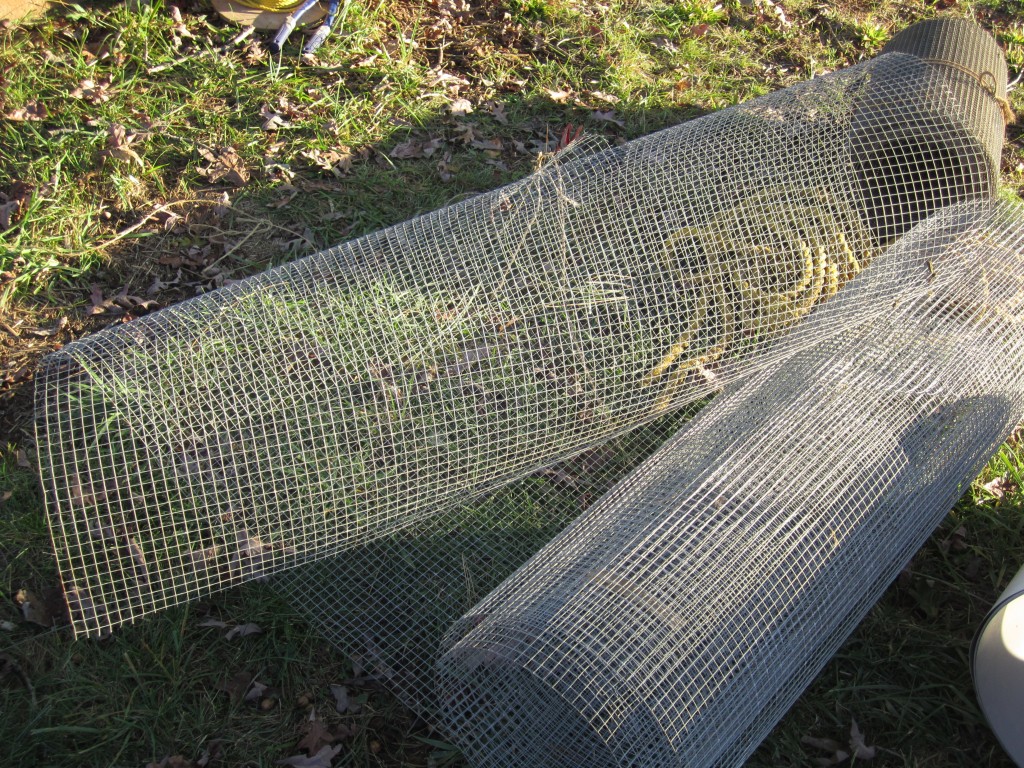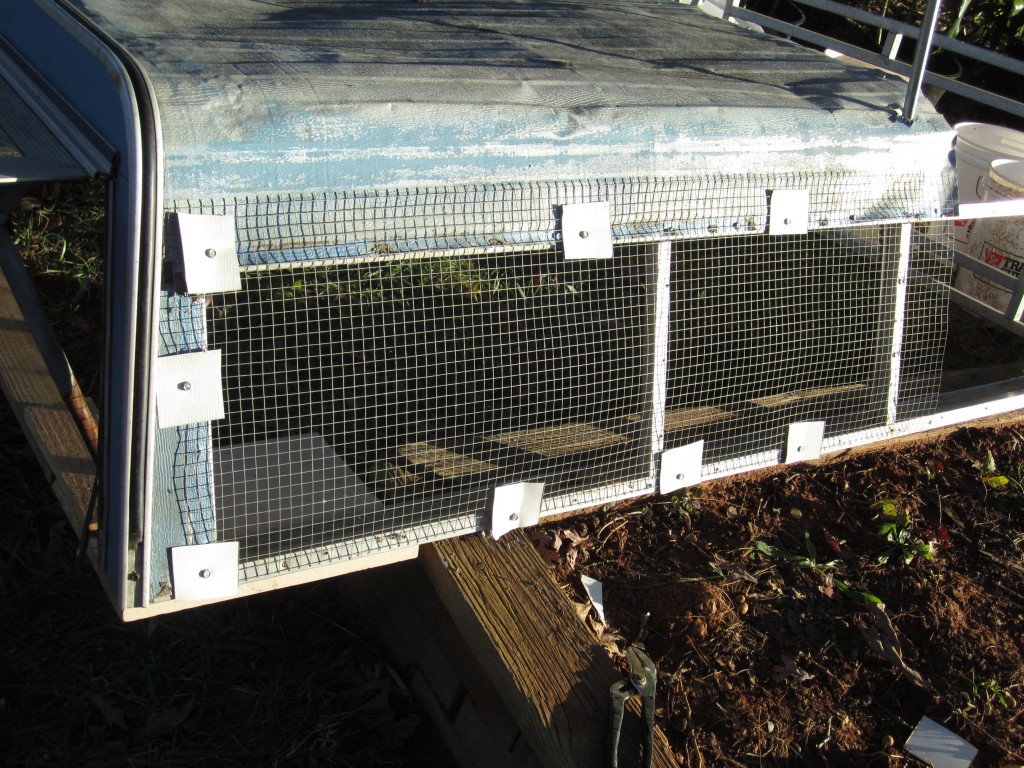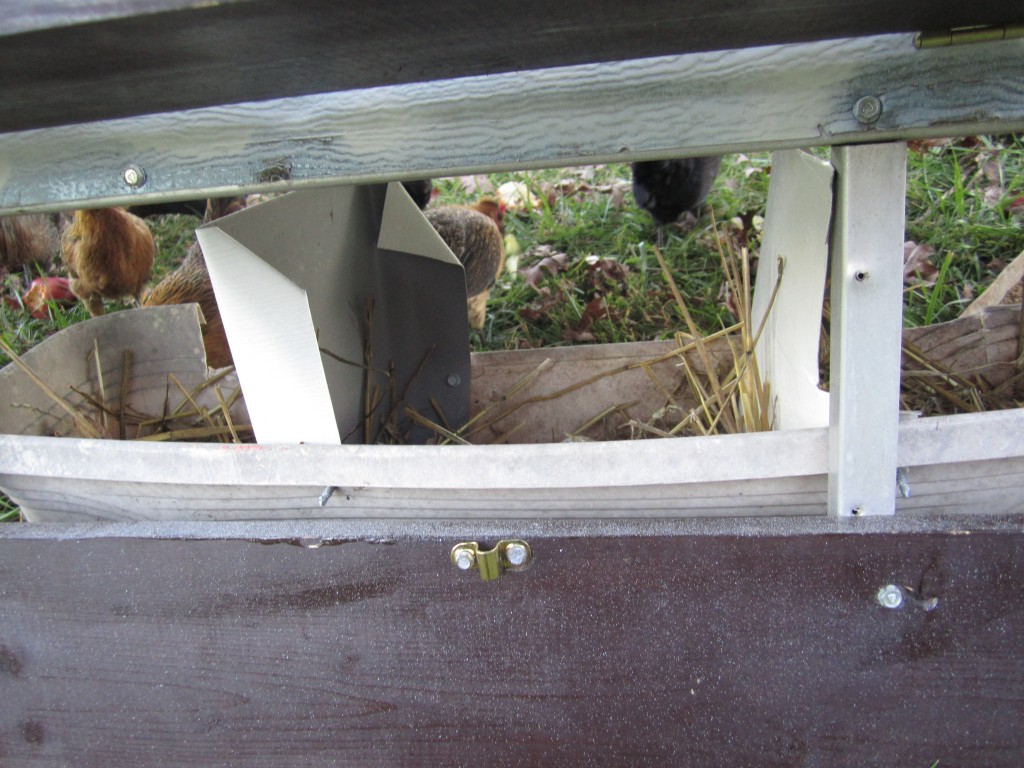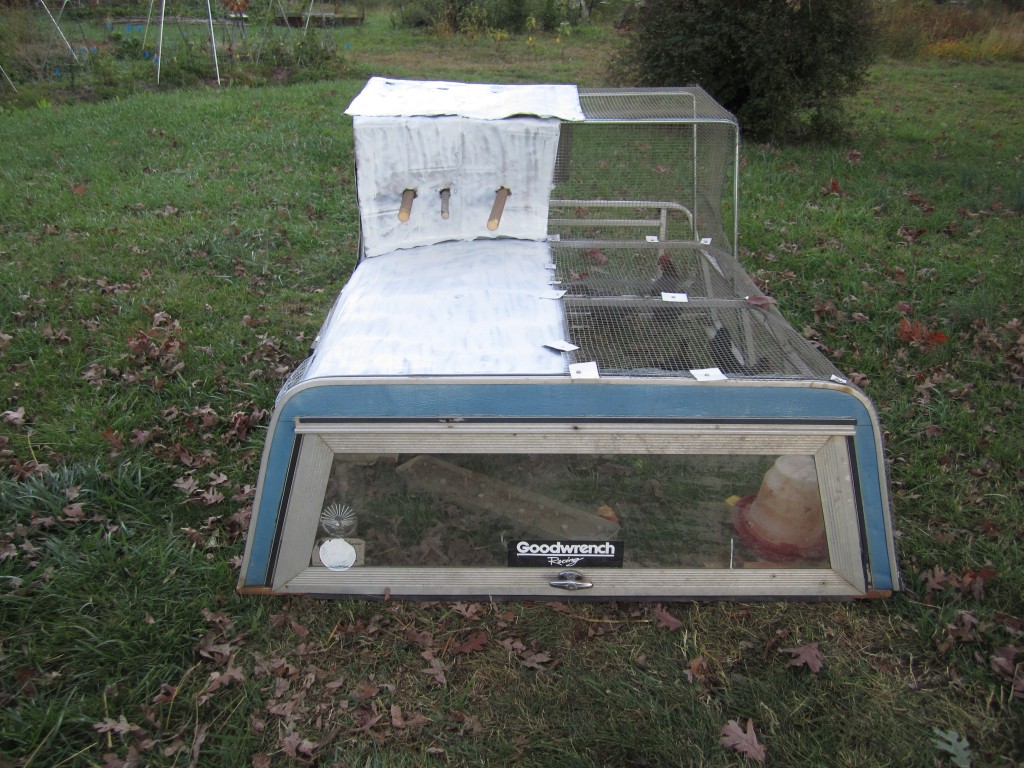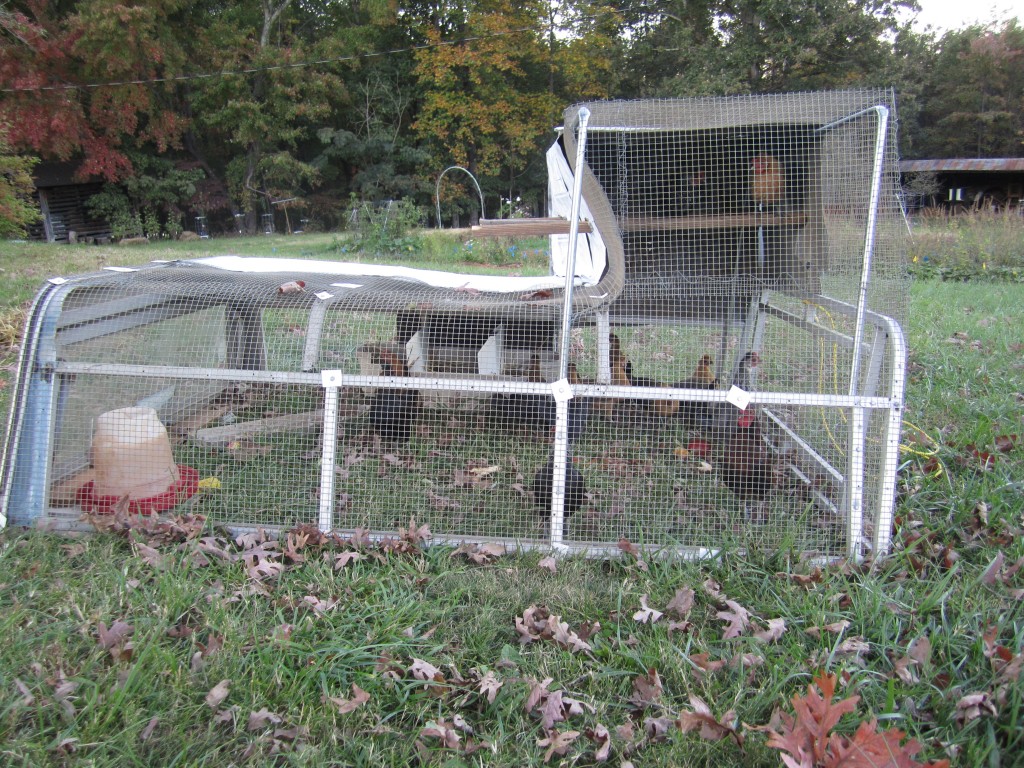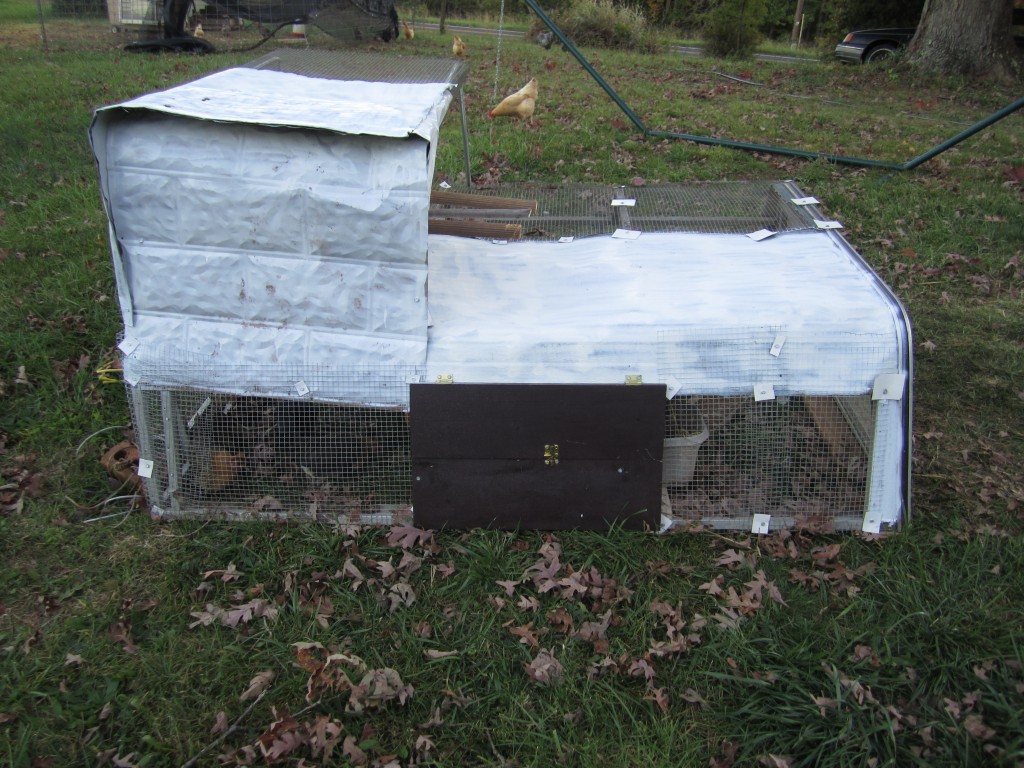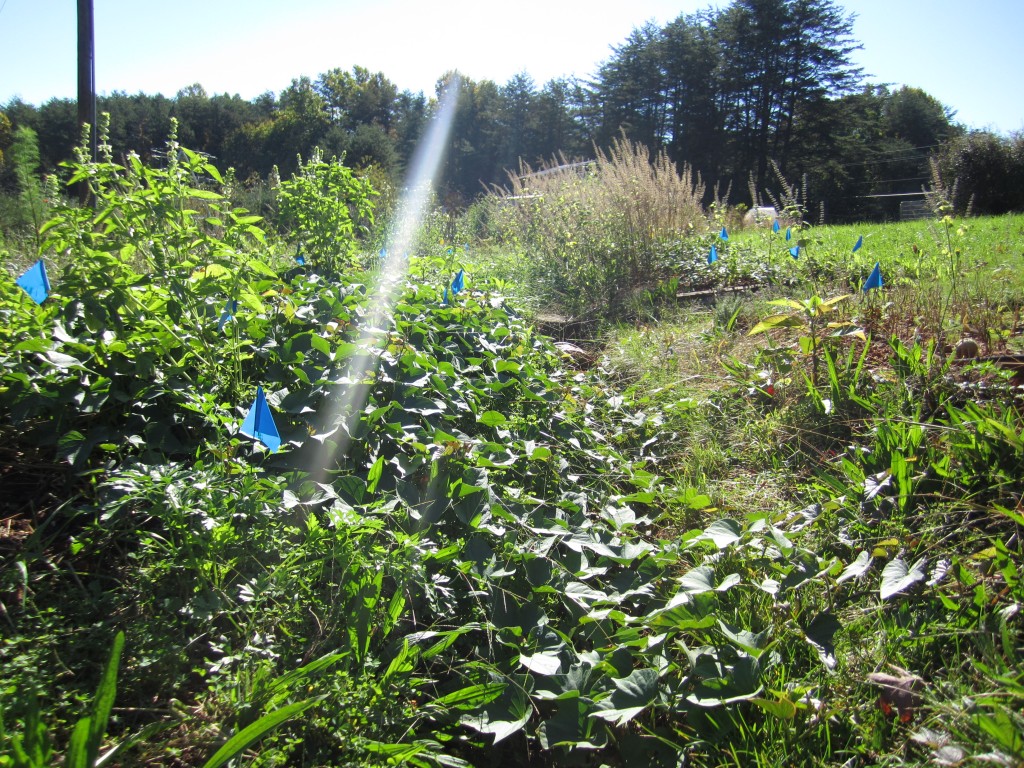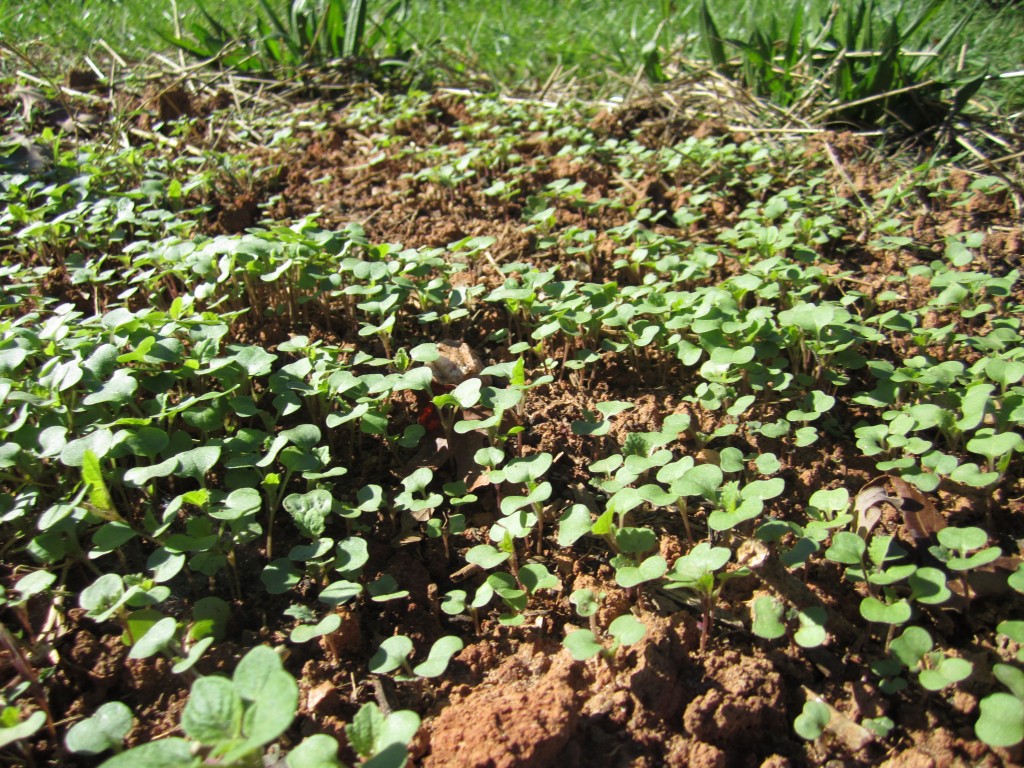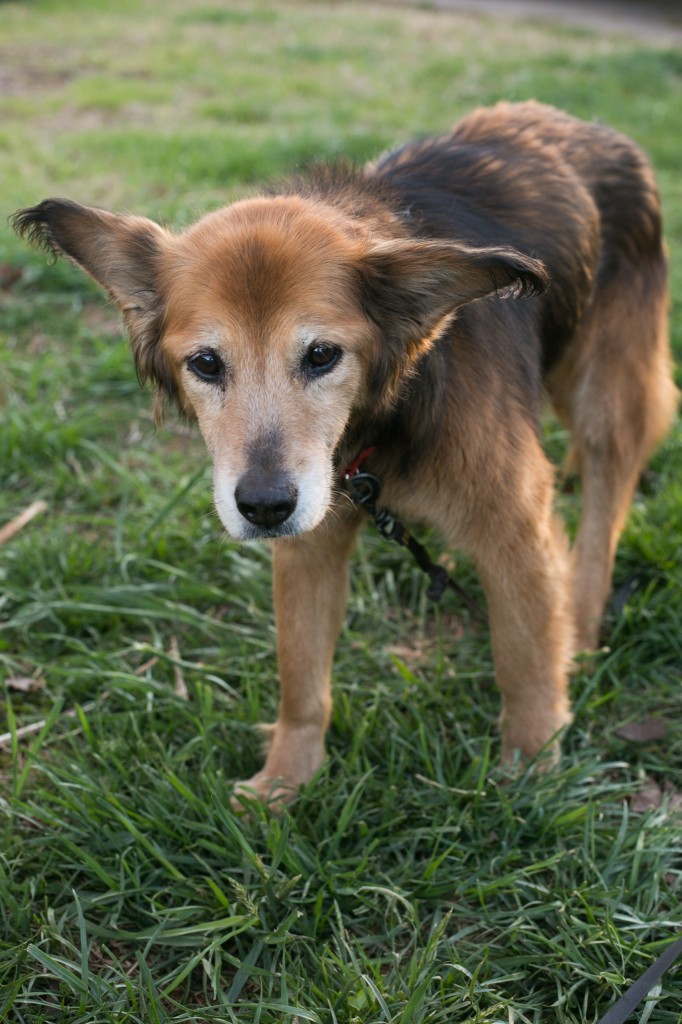
dear, sweet bridey!
what can i begin to say about bridey, the most wonderful dog? i guess i can begin by saying that on september 7, she stopped living. it’s been hard to process because jason and i had to launch ourselves into wedding preparation, and at first i felt like i didn’t get enough time to properly mourn her death. then, the more i thought about it, the more i realized that she would have wanted it that way. given a choice, and knowing her, she would have rather the world continue on around her, just as she always preferred. let me explain further…
ever since i “inherited” her from my friend and roommate who moved to mexico, she and i have always had a quiet, “no need to discuss it” relationship. she never really liked a lot of attention, and when i had friends over she would visit with them for a minute and then promptly dismiss herself and go find her solitary corner to lay in. she never really followed me around the house like bolt does; she always did her own thing and enjoyed her alone time. “strange for a dog,” i always thought. she always seemed so solitary and certainly didn’t like people hugging her or getting too close to her face.
we had an understanding, she and i… we were best friends, but we didn’t need to constantly hang out or be on top of each other (as some dogs like to do). she never slept in the bedroom with me, always preferring to stay on her bed by the front of the house and guard the door. she would bark when she heard strange noises and walk around the house all stiff-legged, just ready for the bad guys to come in. they never did, of course, and i’m sure that’s due largely in part to her bravery and commitment to protecting her house and her friend.
she didn’t care much for other dogs, and just like she was with people, she would visit with them for a little bit and then walk away for some alone time. she and i were partners, best friends, companions. she was always there, no matter what and during my entire adult life, beginning when i was 18, she lived with me and watched over me.
she died on a saturday, about 3 weeks before jason and i got married, almost as though she knew she didn’t need to stick around to take care of me anymore. she was 15 years old, and she had a good long life for a dog. right up until the last few weeks she continued to have fun. her hearing was mostly gone, and jason and i spent many an afternoon laughing at the funny antics that an old, deaf dog can get into. she had certainly gone a little bit senile (who can blame her, living with me for almost a decade?), and would forget that she was walking sometimes and just stop and stand. she had also started to become restless in her old age, and would walk around and get her feet tangled up in her leash. up until the end, her eye sight was alright and that was our best communication with her, that and petting her.
i’m also grateful to her because she taught bolt a little bit about how to be a good dog. she had to put up with a lot from him, and even though i know she secretly enjoyed it, it was still tiresome.
when i walk around our land, i can see her everywhere: in the briar patch where she got lost one morning in the predawn and i had to crawl in and rescue her; on bridey’s run which is named after her because once she started going downhill on that trail her legs would take over and she wouldn’t be able to slow down or stop until she fell over; by her grave, which is at the end of bridey’s run covered in hay and waiting for the clover to grow next spring.
she was such a good friend to me and my family and i will never forget her. i know that her patience, calm demeanor, and laid back and fun-loving attitude will never be matched in another dog that we may have. she was unique and kind and understanding.
the day we decided to put her to sleep was a hard one. we knew that it was coming, because for months she had been wearing diapers (she could no longer control her bathroom urges) and weeks before she had started walking around in the kitchen when we were at work and getting horribly stuck in furniture and spending all day stuck. even after we confined her to the kitchen, and tried to move furniture around, she would find a way to get stuck under the dining room table or even under a regular chair.
we knew she was near the end when she stopped wanting to eat bread, her favorite food of all time (once, she stole freshly baked bread from the counter and hid pieces of it in the sofa and under my pillow for later). she stopped eating everything, couldn’t stand up or support herself if we stood her up, and couldn’t get her mouth to work to drink water. we didn’t want her to dehydrate or starve as her last experience on earth, so we decided to put her to sleep.
i was able to talk to her before the end, thank her for all that she was and that she had done for me, and tell her how much i loved her. i was able to lay with her and pet her and just love her and be with her.
afterwards, i was able to carry her body in my arms down to the grave and lay her in with her favorite rug, some flowers, some bread, a chew toy, and her favorite stuffed animal from years ago. we also sent her with some chicken feathers, since she used to love to chase chickens.
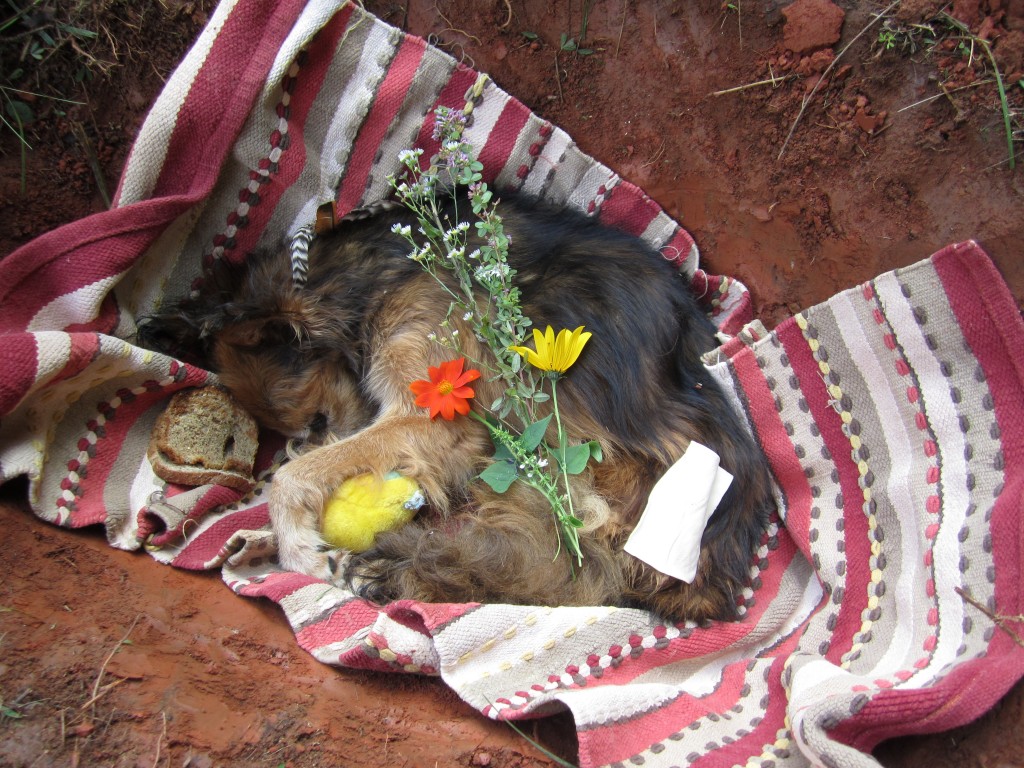
bridey is laid to rest.
jason and i dug the hole and we covered her up together. her grave is right at the end of bridey’s run, and will forever be visible to anyone walking the path to our pond. she will always be here with us, on our land.
bridey was an amazing friend and companion for so long, and we will miss her.
we will miss her, and although we’ve said goodbye, we’ve not said goodbye forever.
.:.
